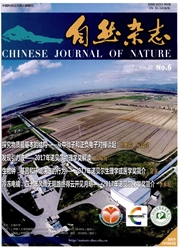

 中文摘要:
中文摘要:
青藏高原湖泊众多,是气候变化敏感的指示器。湖泊作为地表下垫面的重要组成部分,不仅通过陆-之间的水汽和能量交换影响区域气候(如降水、气温),而且通过沉积物记录了过去的气候变化信息。湖泊的水量和水质是制约湖泊与大气水分能量交换和湖泊沉积过程的基本要素,对青藏高原湖泊水量、水质的基础调查工作是准确认识青藏高原对气候响应与影响的关键。基于最近5年在青藏高原地区开展的湖泊基础调查工作,明晰了过去对青藏高原重要湖泊基础资料的模糊认识,阐述了湖泊面积、水量变化的时空差异及其对气候变化的响应,探讨了基于遥感水色开展大范围长、时间湖泊水质研究的新方法。
 英文摘要:
英文摘要:
There are a large number of lakes distributed on the Tibetan Plateau (TP), which are sensitivlc to climatic cnange. LaKes, as one of the important components of underlying surface on the TP, not only affect the regional climate by land-atmosphere water and energy exchanges, but also record the information of climatic change through sediments. Lake water storage and water physieochemical property are basic factors affecting water and energy exchanges between lake and atmosphere, and lake sedimentary processes. The basic investigation of lake water storage and water physicochemical property on the TP is one of the key issues for deep understanding the responses and influence of TP in the climatic change. Based upon the basic investigations of the lakes on the TP during past 5 years, we have clarified some fuzzy recognition and renewed the basic data of some important lakes. The lake area and water storage of the TP and their changes with climatic change, as well as the spatio-temporal difference, have been elucidated. Further, a new method is introduced to study water physicochemical properties and their changes within the ranges of long time and wide area based upon water color derived from remote sensing images.
 同期刊论文项目
同期刊论文项目
 同项目期刊论文
同项目期刊论文
 期刊信息
期刊信息
